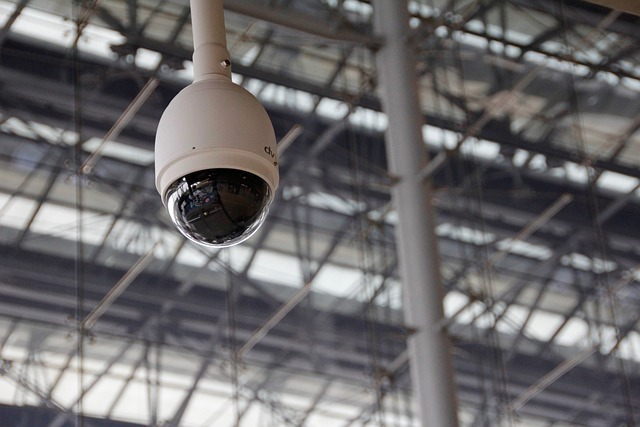As a Chief Information Officer, CISO, Security Director, or CEO of any organization, leaving your digital defenses vulnerable to data breaches comes with costly risks. From the potential for customer data theft and extensive damage to your industry reputation—it’s critical that you take proactive security measures to ensure a high-security posture.
Thankfully, understanding the basics of what it takes to protect your network is within reach by leveraging our comprehensive security posture checklist. It will provide you with key information on how best to improve and maintain an effective cyber defense strategy through step-by-step instructions that can be put into practice immediately.
By tailoring these tips and strategies to the unique needs of your business or organization, you will quickly benefit from increased network safety while achieving ultimate peace of mind in knowing that an effective defense is deployed throughout your IT environment.

What is Security Posture and Why Should You Care About It
As the digital landscape continues to expand, so does the need for businesses to fortify their cybersecurity measures. This is where security posture comes into play. Essentially, it’s an organization’s overall plan for safeguarding its sensitive data and digital assets from potential threats.
A strong security posture involves not only implementing the right security protocols and technologies but also ensuring that every member of the team is well-versed in security best practices. Why should you care about it? Well, for one, a successful cyber attack can not only result in the loss of your organization’s sensitive data but can also wreak havoc on its reputation and bottom line.
By prioritizing security posture, you can better equip your business to protect IT assets against and mitigate potential cyber-attacks.
Security Posture Definition
Security posture refers to the overall security posture of an organization or institution and refers to the approach taken to protect its digital assets, such as networks, data, applications, and systems. It is achieved through a combination of internal policies, external standards, and technologies.
This includes data encryption, authentication, access control, vulnerability management, and automated threat detection. Additionally, an organization’s security posture is enhanced by staying up-to-date with regulatory compliance laws and following best practices in order to mitigate security risks.
To ensure an effective cybersecurity security posture improves itself, organizations must continuously evaluate their security posture and create a well-defined security strategy that meets the requirements of the organization and its users.
Why is an Organization’s Security Posture Important?
Organizations must prioritize cybersecurity and have an effective security posture in place to protect their digital assets from various threats. The consequences of not doing so can be serious, ranging from financial losses to legal problems, and public relations issues. A security breach can result in the theft of valuable data or personal information, exposing the company to legal action or hefty fines.
In addition, an inadequate security posture can damage a company’s reputation and lead to a loss of trust from customers, which will lead to a decline in sales and revenue. Furthermore, a weak security posture can put the company’s operations and finances at risk, as it can open doors to malicious hackers who can disrupt business processes and steal sensitive financial information.

By having a strong security posture, organizations can reduce the risks of cyber-attacks and protect their digital assets. This will help them gain customer trust, protect their data, and maintain a positive public image. An effective security and posture assessment is thus essential for the overall success of an organization’s cybersecurity posture.
Establishing Your Digital Defenses – Principles of Network Security
In today’s digital age, network security is a crucial aspect that every individual and organization must take seriously. Establishing your digital defenses is not just about protecting your sensitive data; it is also about safeguarding your entire network infrastructure.
By following the principles of network security, you can mitigate the risks of cyber threats and attacks, such as unauthorized access, data breaches, and malware infections. Some of the essential principles include securing your network perimeter, monitoring your network traffic, using proven encryption techniques, and enforcing access control policies.
With the rise in cyber attacks, it has never been more important to prioritize network security- not only for protection but also for the peace of mind it provides, knowing that your system is protected from harm.
Enterprise Security Posture
The enterprise security posture defines how an organization protects its data and digital assets from malicious activity. It is a set of procedures, policies, and tools to protect both internal networks and systems as well as customer or user information. A comprehensive security posture should address physical, technical, operational, and administrative measures.
Physical measures include the use of firewalls, routers, and other security devices to protect the physical infrastructure of the network. Technical measures include activities such as patching systems, installing antivirus software, setting up intrusion detection/prevention systems (IDS/IPS), and conducting regular vulnerability scans.
Operational measures are procedures associated with user adoption and access control, including user authentication processes and authorization mechanisms. This may also include changes to the organizational structure or processes that will minimize risks associated with user access or activities.
Finally, administrative measures are policies and procedures related to data encryption and other security-related practices, such as documenting all network activity for future reference. Additionally, this includes setting up incident response plans in case of a security breach or attack.
Understanding the Impact of Software-as-a-Service (SaaS) on Your Security Posture
In today’s rapidly evolving digital landscape, utilizing Software-as-a-Service (SaaS) has become the norm for most businesses. However, with such convenience, there comes a certain degree of risk. While SaaS provides organizations with scalable, cost-effective, and streamlined solutions, it can also pose serious security threats.
It’s important to understand how SaaS impacts your security posture and take the necessary steps to mitigate the risks. By improving your security posture, ensuring adherence to best practices, identifying data vulnerabilities, and adopting robust security measures, you can not only secure your sensitive information but also prevent hackers from exploiting gaps in your security system. A strong security posture is fundamental to staying ahead of evolving threat landscapes and preserving the trust of your customers.

Protecting Your Data with Robust Authentication and Access Control Policies
As the digital age continues to evolve, safeguarding your personal and professional data is more important than ever before. Employing robust authentication measures and access control policies can help prevent unauthorized users from gaining access to your sensitive information.
By implementing multifactor authentication processes and assigning roles and permissions based on job responsibilities, you can significantly reduce the risk of security breaches.
Additionally, regularly reviewing and updating these policies can ensure that your data remains protected against the latest security threats. In today’s ever-changing digital landscape, it is imperative to prioritize data security with the implementation of continuous monitoring of strong authentication and access control policies.
Security Posture Levels
Security posture levels are the measures of an organization’s cybersecurity standards. Security posture is determined by assessing the strength of security controls, practices, and procedures within an organization. It also takes into account how well a system is protected from threats and vulnerabilities.
Organizations will typically assess their security posture using several different metrics, such as auditing logs, inspecting network traffic, and running penetration tests. These tests will provide insight into the effectiveness of the organization’s security measures. The results from theseassessments allow organizations to determine their overall security posture level.
Organizations may also use other methods to assess their security posture levels such as Gap Analysis or Risk Analysis. In Gap Analysis, an organization looks for discrepancies between its current security posture and its desired security posture. Risk Analysis evaluates an organization’s risk exposure by looking at the likelihood of a threat being exploited, how severe the impact might be, and what controls are in place to mitigate those risks.
Security posture levels also take into account external factors such as legal or regulatory requirements. Organizations must ensure that they meet all applicable laws and regulations so that they can maintain their security posture. Additionally, organizations should continually review and update their policies to ensure they are prepared for changing threats.
Minimizing Risk by Establishing Vulnerability Management Practices
In today’s ever-evolving landscape of cyber threats, it is crucial for organizations to establish vulnerability management practices to minimize risk. The first step in this process is identifying potential security weaknesses. From there, implementing a structured approach for addressing them can help to mitigate the risk of a breach or attack.
Vulnerability management practices can include regular vulnerability scans, patch management, and penetration testing. By staying proactive and prioritizing security measures, companies can protect their valuable assets and maintain the trust of their stakeholders.

Utilizing Automation to Automatically Detect, Analyze, and Respond to Threats
In today’s world, cyber threats are becoming more sophisticated and devastating with each passing day. The need to have a strong and proactive defense system in place for the detection of such threats is more crucial now than ever before. The answer to this lies in the utilization of automation.
Automation has the ability to automatically detect, analyze, and respond to threats in real-time, providing organizations with a fast and effective defense mechanism against cyber attacks. By reducing manual intervention and human error, automation can offer increased accuracy and efficiency in threat detection and incident response plans. With the use of automation, organizations can stay ahead of the curve and ensure the security of their valuable data.

With the rise of cyber threats, it is essential to understand and strengthen your organization’s security posture. You must create an effective digital defense strategy by leveraging principles of network security, utilizing software-as-a-service (SaaS), establishing authentication and access control policies, implementing vulnerability management practices, and using automated threat detection solutions.
These steps will help ensure that your data is secure and protected from malicious actors and unwanted breaches. The full security status of your organization is a critical factor in its success and should be treated with importance. By following the outlined strategies to improve your company’s security posture, you can take control of protecting your data and infrastructure while protecting the longevity of your business.

10 Steps to Increase Security Posture
One of the most important components of any organization’s security posture is implementing good security practices. Good security ensures that data remains confidential, integrity is maintained and availability is maximized. Here are a few steps organizations can take to increase their security posture:
1. Establish clear and robust authentication and access control policies.
2. Use a secure software-as-a-service (SaaS) solution for managing user identity, access, and permissions.
3. Implement vulnerability management practices to identify potential weaknesses in your system.
4. Utilize network security solutions such as firewalls, intrusion prevention systems (IPS), and secure web gateways.
5. Leverage automated threat detection solutions to identify and respond to malicious activity quickly.
6. Regularly review your own security program and posture by assessing the effectiveness of your security measures.
7. Develop robust incident response plans that detail the steps necessary for responding to potential threats or breaches.
8. Establish a comprehensive data backup and recovery solution to ensure the protection of your critical data.
9. Educate employees on the importance of security awareness and best practices for staying safe online.
10. Implement encryption measures to protect sensitive information both in transit and at rest.
Following these steps will help you create and maintain a secure security posture. Implementing a cybersecurity posture with the right technologies operating systems, policies, and processes is essential for protecting your organization from digital threats. With the right level of security in place, you can ensure that your data remains safe and secure.
Security Controls for Improved Security Posture
As a cybersecurity expert, it is important to understand the essential security controls needed for an improved security posture for an organization operating in [industry type] and utilizing [technology/product]. After conducting a thorough analysis, the necessary security measures must be outlined in detail, including technical controls, organizational policies, and procedures.
This should include both preventive measures such as authentication and access control policies, as well as detection and response processes such as automated threat detection solutions. It is essential to prioritize the most critical controls and discuss how they align with industry standards and regulations.
Additionally, the benefits and potential drawbacks associated with each control should be analyzed and practical recommendations should be offered on how to implement and manage the controls effectively. For instance, developing effective policies and procedures to restrict access to sensitive data, using encryption technologies to protect data-in-transit, implementing vulnerability management practices, and leveraging two-factor authentication should all be considered when designing a comprehensive security posture.

Vendor Risk Management
Vendor risk management is critical to any organization’s security posture. Without an effective and comprehensive risk management plan, organizations are vulnerable to a variety of cyber threats that can arise from third-party vendors.
There are several key risks associated with engaging with third-party vendors, such as data loss, unauthorized access, and malicious activities. It is essential to understand these risks and create a detailed vendor risk management plan to ensure the security of your data and infrastructure.
To create an effective vendor risk assessment program, organizations must first identify the key risks involved in working with third-party vendors. This includes understanding the potential threats posed by each vendor and developing strategies to mitigate them.

Additionally, organizations should establish criteria for selecting the right vendor, such as a vendor’s reputation, compliance with relevant security standards, and the quality of the vendor’s security practices.
Organizations can also consider adopting security frameworks such as ISO 27001, NIST Cybersecurity Framework, or Cyber Essentials to evaluate and manage vendor risk.
Security Posture Assessment
A security posture assessment is a comprehensive evaluation of an organization’s security strategy and practices. It evaluates a business’s security posture across a range of topics, such as authentication and access controls, network security, vulnerability management, and threat detection. The assessment also measures if a business is following best practices and other security controls that are in line with industry-standard security requirements.
The objectives of a security posture assessment are to identify gaps in an organization’s security posture and to recommend actionable steps to address those gaps. The assessment should also identify any areas of risk that need to be addressed. To conduct an effective security posture assessment, businesses should deploy a range of tools and technologies. These include vulnerability scanners, access control and authentication solutions, and intrusion detection systems.

A weak security posture can have serious repercussions on a business. It can lead to data breaches, malicious actors exploiting vulnerabilities in the system, and financial losses. A security posture assessment helps to address these risks by highlighting where a business needs to strengthen its security posture.
It can also provide actionable steps to improve the security posture of a business. By performing a security posture assessment regularly, businesses can ensure that their digital systems remain secure and their data is protected.
Security Posture Assessment Methodology
The goal of security posture assessment is to develop an understanding of the overall security state of a system or environment. This can be achieved through a comprehensive evaluation that encompasses multiple components and controls, including technology, processes, and people.
To build an effective assessment methodology it’s important to consider both internal and external threats that might affect the system or environment. It is also important to understand how these threats might affect the system’s security posture.
The security posture assessment methodology should include both static and dynamic components, such as:
- A thorough evaluation of existing controls and processes;
- Identification of any gaps between current and desired security state;
- Analysis of potential risk scenarios; and
- Quantification of any risks.
The assessment should also include a review of the current security posture as it relates to industry standards and best practices. This will provide an understanding of the system’s strengths and weaknesses, allowing for targeted recommendations on how to improve its security stance.
Once the assessment is complete, a security posture assessment report should be generated. The report should detail the findings of the assessment, including any risks identified and potential improvements that could be made. This can then be used to guide decision-making on how best to enhance a system or environment’s security posture going forward.
Finally, it is important to keep track of changes in the security posture over time. Periodic assessments can help to ensure that improvements are sustained and that any new risks are addressed. In this way, the security posture of a system or environment can be maintained and continually improved.
In conclusion, developing an effective security posture assessment methodology requires a thorough evaluation of existing controls and processes, identification of any gaps in the current security state, analysis of potential risk scenarios, quantification of risks, and review of industry standards and best practices. The outcomes of this assessment should be documented in a security posture assessment report to guide decision-making for improving the system or environment’s security stance, and periodic assessments should be conducted to ensure that improvements are sustained going forward.
What is Network Posture Enforcement?
Network posture enforcement is a process that involves ensuring security policies are enforced across an organization’s IT infrastructure. This may include implementing technologies like firewalls, intrusion detection systems, and authentication mechanisms. By enforcing these policies, organizations can better protect their networks from malicious actors looking to compromise them.
Network posture enforcement also includes monitoring the network for signs of external threats or malicious activity. This monitoring can help identify any potential risks or vulnerabilities that need to be addressed and gives organizations the ability to quickly respond to threats.
Mobile Security Posture
Mobile security posture is a term used to describe the level of trust in an organization’s mobile devices and their associated networks. It includes measures such as user authentication, data encryption, application security, and vulnerability management. Having a strong mobile security posture can help protect your business from malicious actors or opportunistic attacks.
In order to check your mobile security posture, you should start by understanding your current risks. This includes considering the devices and applications that are used in your organization, how they are protected, and what vulnerabilities may exist within them. Once you understand the risks, it’s important to implement measures to improve your mobile security posture.
One of the best ways to improve your mobile security posture is to implement managed detection and remediation. This is where you proactively monitor your devices and networks for any potential threats, then take action to address them immediately. By taking a proactive approach, you can ensure that vulnerabilities are addressed before they become major issues.
Another way to improve your mobile security posture is by regularly patching devices and applications. This helps to ensure that any vulnerabilities that exist are addressed in a timely manner, which helps to reduce the chances of a successful attack. It’s also important to ensure that all devices and applications are kept up-to-date with the latest security patches.
Finally, it’s important to stay informed about new threats and how they can affect your mobile security posture. Keeping up with industry news and trends can help you to identify any potential risks before they become an issue.
By taking these steps, you can ensure that your organization’s mobile security posture is strong and that any vulnerabilities are addressed promptly. This helps to keep malicious actors at bay, as well as protect your data from opportunistic attacks. Taking a proactive approach to mobile security is essential for any business today.
It is also important to have a managed system for the detection and remediation of potential threats. Ensuring that you are monitoring your systems regularly can help detect any suspicious activity or malicious actors attempting to access your data. In the event of an attack, having processes in place to quickly identify and mitigate the threat can help reduce the overall impact of the attack and protect your data from further damage.
Conclusion
By following the steps outlined above, organizations can dramatically improve their security posture and protect their data from malicious actors. It is essential to understand the principles of network security, utilize software-as-a-service (SaaS) solutions, enforce authentication and access control policies, and deploy automated threat detection solutions.
Additionally, organizations should always maintain a high-security posture by developing the right policies, testing and patching system vulnerabilities, and implementing advanced technologies like artificial intelligence and machine learning. Taking these steps to improve the security posture will help protect organizations’ valuable data and ensure the longevity of their business. Contact Cybriant today to learn more about security procedures and security posture assessment services.



